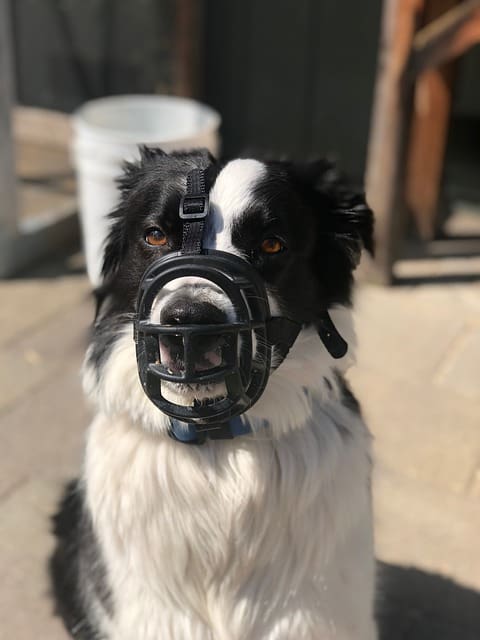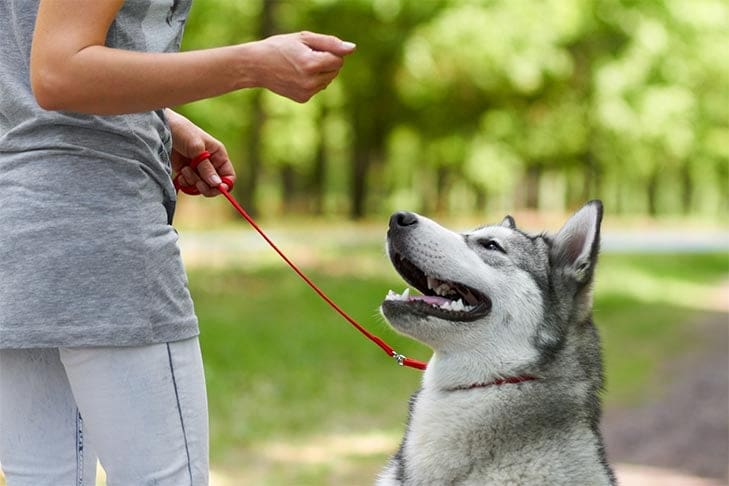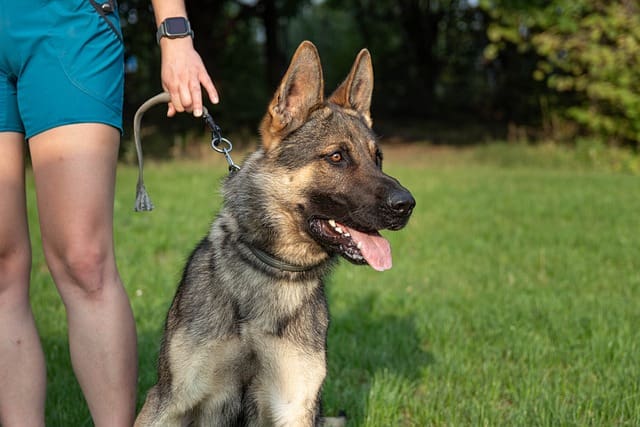Dog Training
Unleash Confidence: Master the Art of Crate Training Your Dog
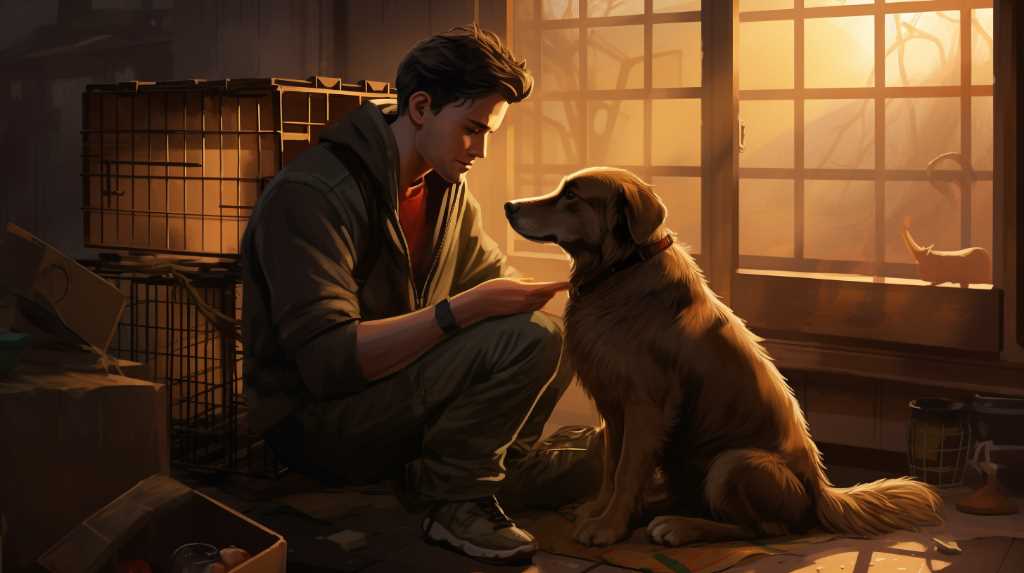
Ever wondered how to boost your dog’s confidence while keeping them safe? You’re in the right place!
I’m going to guide you through the art of crate training. It’s not just about confinement, it’s about creating a comfortable, secure space for your furry friend.
With patience and consistency, you’ll help them see their crate as a safe haven, not a prison.
So, let’s start this journey together to foster your dog’s confidence and independence. It’s easier than you think!
Selecting the Perfect Crate for Your Dog
You’ll need to consider several factors when choosing the perfect crate for your dog. This includes size, comfort, and safety. It’s not just about purchasing any crate, it’s about finding the right one.
Firstly, consider the size of the crate. Your dog’s crate should be large enough for them to stand, turn around, and stretch out in. However, it’s important to remember that too much space can leave your pup feeling insecure.

Next, don’t overlook the importance of comfort. Opt for a crate with smooth edges and a secure door to prevent any injuries. Your dog should feel comfortable and safe inside the crate.
Safety is paramount when it comes to choosing a crate. Make sure the crate is sturdy, well-ventilated, and escape-proof. This will ensure your dog’s safety and prevent any accidents or escapes.
Making the Crate a Comfortable Space
Now that you’ve chosen the perfect crate, it’s time to turn it into a cozy haven for your dog.
Remember, your goal is to make your pet feel safe, secure, and comfortable in their new space.
Let’s explore some practical ways you can enhance the comfort of the crate and understand your dog’s crate preferences.
Crate Comfort Enhancements
Adding soft blankets and toys to the crate can make it more comfortable and inviting for your dog. It’s essential you create an environment that feels safe and cozy. Think about what you’d want if you were in their position – wouldn’t you prefer a soft, warm space over a bare, hard one?
Introduce the crate gradually, with their favorite toys, treats, or even a piece of your clothing that smells like you. It’ll help reduce their anxiety and promote a positive association with the crate. Remember, you’re not just training your dog, you’re also serving their needs and ensuring their overall well-being.
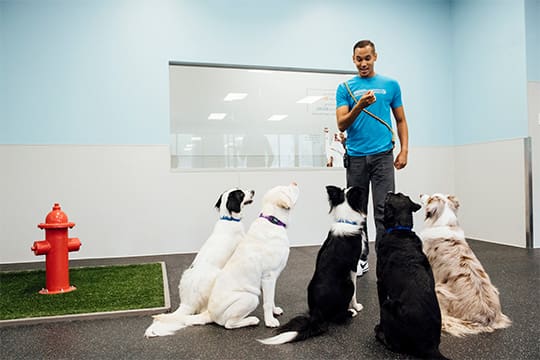
Dog’s Crate Preferences
Every pup has their own preference when it comes to their cozy corner, and it’s your job to figure out what they like and dislike. It’s not just a crate; it’s their home within your home. So, let’s make it feel that way.
-
Location: Some dogs prefer their crate in a quiet, low-traffic area, while others might like to be where the action is. Try different spots and observe their reaction.
-
Kitchen
-
Living room
-
Your bedroom
-
Bedding: Soft, warm, and washable are key. Your dog might like a plush bed or only a thin pad.
-
Plush dog bed

-
Thin pad
-
Blankets
-
Toys: Safe chew toys can provide comfort and prevent boredom. Be observant of what they enjoy.
-
Squeaky toys
-
Chew bones
-
Treat-dispensing toys
Your empathy and attention will make their crate a happy place.
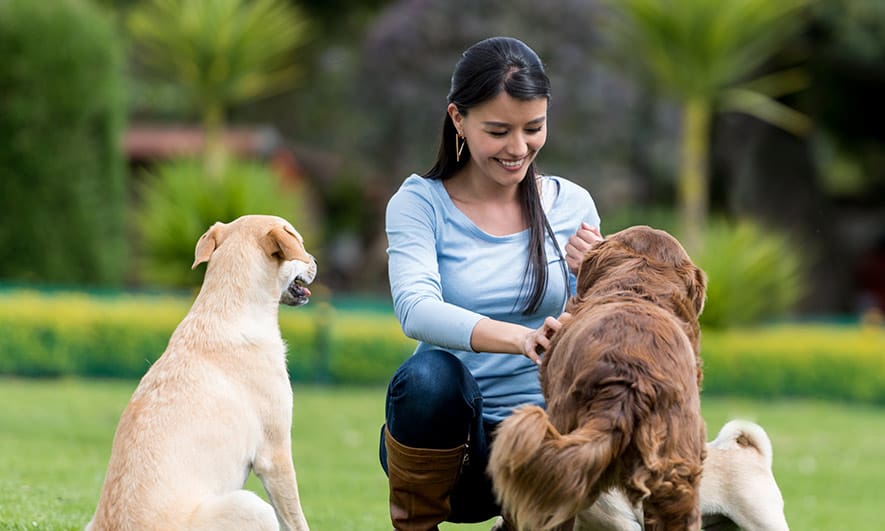
Familiarizing Your Dog With Their New Crate
You’ll need to introduce your dog to their new crate in a way that makes them feel safe and comfortable. Start by placing it in a common area, where they spend most of their time. This familiar environment will help them feel secure.
Let the crate door stay open, so they can explore at their own pace. Be patient and don’t rush them. Use positive reinforcements like treats, praises, and toys to make their crate experience rewarding.
Remember, the goal is to make the crate their personal haven, not a punishment. With time, your dog will associate the crate with safety and comfort.
You’re not just training them for crate use, you’re serving them by enhancing their sense of security and well-being.
Implementing Crate-Feeding Routines
Now that your pooch is acquainted with their new crate, it’s time you start implementing a crate-feeding routine. It’s a simple, yet powerful technique that can strengthen your pet’s positive association with the crate. Here’s how to go about it:
- Start by feeding your dog their regular meals near the crate.
- If they’re comfortable, you can place the food dish inside the crate.
- As they get more comfortable, gradually move the dish further back.
Remember, it’s not a race. Allow your furry friend to set the pace. In their time, they’ll start seeing the crate as a positive and safe space. Patience and consistency are crucial.
Next, let’s explore how to gradually increase your dog’s crate time.
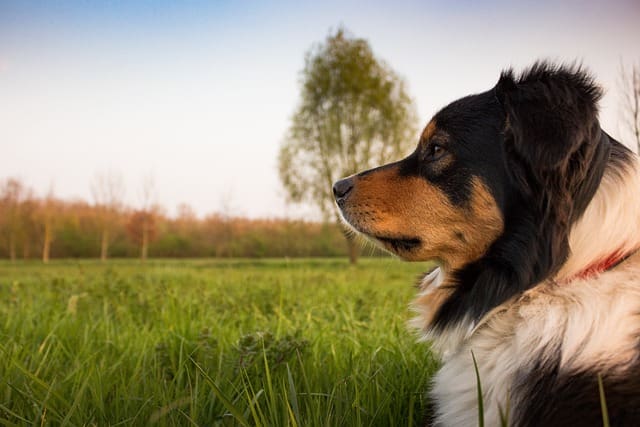
Incrementally Increasing Crate Time
After mastering crate-feeding routines, the next step is to gradually increase your dog’s crate time.
This isn’t a race, so take your time, prioritizing your pet’s comfort and adjustment to the new routine.
Start With Short Stints
In the beginning, it’s best if you keep the crate sessions short to ease your dog into this new experience. You’re not just training your dog; you’re serving them by creating a safe, comfortable space.
Imagine this process:
- Start with just a few minutes at a time.
- Let your dog sniff and explore the crate.
- Feed them in the crate to create a positive association.
- Gradually increase the time.
- Use a timer to ensure you’re not rushing things.
- Be patient and consistent.
- Always reward good behavior.
- Use treats and praise to reinforce the behavior you want.
- Remember, you’re building trust and confidence.
Gradual Time Extension
You’ll find it beneficial to gradually extend the time your furry friend spends in their new space. As they get comfortable with short stints, slowly increase the duration. Be patient, understanding that learning takes time.
Each dog is unique, so don’t compare your pup’s progress to others. Remember, rushing can create negative associations with the crate, which is the exact opposite of what you’re aiming for.
Reward your dog for longer stays, reinforcing positive behavior. Consistent, kind praise goes a long way in building confidence in your pet.
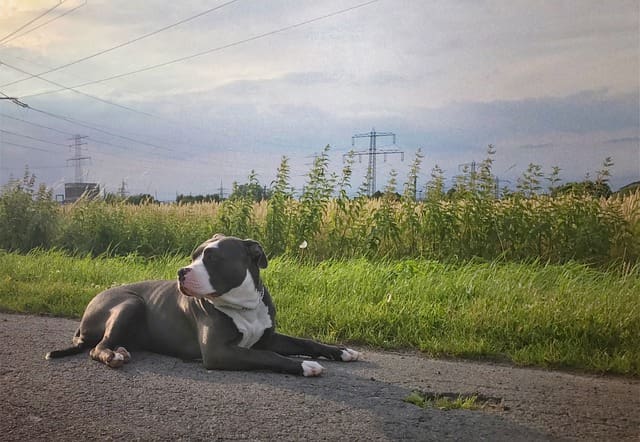
You’re doing a noble job in serving your pet’s needs by ensuring they feel secure. Keep it up, your patient and empathetic approach to crate training is setting up your dog for success.
Monitoring Dog’s Comfort
While crate training, it’s equally critical to monitor your dog’s comfort. Ensuring your furry friend is at ease is an essential part of this process. Remember, crate training isn’t about confinement; it’s about creating a safe, comfortable space for your dog.
Here are few things you should keep in mind:
-
Body Language: Observe how your dog behaves. Dogs can communicate their discomfort through:
-
Whining or barking
-
Excessive scratching or digging
-
Time Spent: Notice the amount of time your dog spends willingly in the crate. Avoid forcing them inside.

-
Comfort Items: Include your dog’s favorite toys or blanket in the crate to provide a sense of familiarity and comfort.
The Role of the Crate During Your Absence
Don’t worry, the crate can become a safe haven for your dog when you’re not home. It’s not just a confinement tool; it’s their personal space, a sanctuary where they can retreat and relax. You’ve observed their comfort levels and adjusted accordingly. Now, it’s time to entrust them with this space during your absence.
Remember, it’s crucial to maintain a positive association with the crate. Never use it as a punishment. Before you leave, provide them with their favorite toy or a comforting blanket that smells like you. This familiarity will ease their anxiety. With time, patience, and consistency, they’ll associate the crate with safety and security, even when you’re not around.
You’re doing great, keep it up!
Nighttime Crating: A Detailed Guide
It’s time to delve into the details of how to effectively use the pen at night. Nighttime crating, when done correctly, can help your dog feel secure and foster a routine. But, it’s not just about shutting the door and turning off the lights. There’s a process to follow. Let’s break it down:
-
Create a calming environment:
-
Dim the lights

-
Play soft music or white noise
-
Ensure their comfort:
-
Provide a snugly blanket
-
Include a favorite toy
-
Promote a ‘nighttime’ routine:
-
Limit water intake before bed
-
Take them outside for a bathroom break

The Balance: Avoiding Overuse of Crating
You’ve got to strike a balance and avoid overusing the pen, as this could lead to anxiety or behavioral issues in your pup. Remember, it’s not a punishment, but a tool to help your dog feel secure. Overdoing it, however, can backfire.
It’s important to remember that dogs need social interaction and exercise. They aren’t meant to be cooped up all day. If you’re heading to work, consider a dog walker or doggy daycare. When you’re home, let them out for regular breaks and playtime. Keep their crate time to a minimum.
This balance ensures your pup’s wellbeing and strengthens your bond. Remember, crate training serves your dog, not the other way around.
Frequently Asked Questions
What Should I Do if My Dog Shows Severe Anxiety or Fear Towards the Crate?
If your dog’s showing severe anxiety or fear towards the crate, don’t force them in. Instead, foster a positive association with the crate through treats, toys, and patience. Seek a professional if the fear persists.
How Can I Handle House Training a Puppy While Also Crate Training?
When house training your puppy, it’s crucial to balance it with crate training. Use the crate for short periods initially, associating it with positive experiences. Consistency and patience are key in this dual training process.
Are There Any Specific Breeds Which Are More Resistant to Crate Training?
No breed is inherently resistant to crate training. It’s more about individual temperament and past experiences. You’re dealing with a unique personality, so patience, consistency, and positive reinforcement are key.
What Should I Do if My Dog Is Showing Signs of Aggression When I Try to Crate Him?
When your dog shows aggression during crate training, it’s crucial to stay calm. Understand his fear, reinforce positive behavior with treats, and take it slow. Consulting a professional may also be needed.
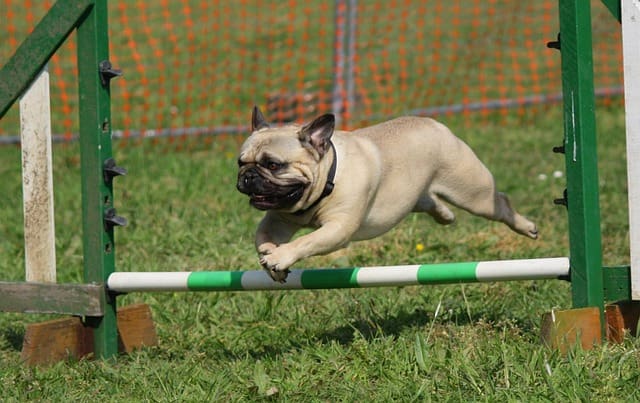
What Is the Best Way to Handle a Situation Where My Dog Relieves Itself Inside the Crate?
If your dog’s relieving itself in the crate, don’t panic. It’s crucial to clean it up promptly, use an odor-eliminating cleaner, and revisit potty training. Patience and consistency are key to solving this issue.
Conclusion
So, you’re nearly there, ready to master the art of crate training. It won’t happen overnight, but with patience and consistency, you’ll soon see progress.
Remember, it’s all about balance. Overuse can lead to problems. But get it right, and you’ll unleash a new world of confidence for your furry friend.
So, are you ready to transform your dog’s life and create a safe, comfortable haven they can call their own?
Let’s begin the journey.

Hello, My Dog-Loving Friends! I’m Jason Brown, a social media marketer for Dog Training Schools and a writer at BestDogTraining.com. My world is all about the joy and wisdom our four-legged friends bring. I love the exchange of learning with dogs; it’s not just my job. It’s my way of life.
My journey began at Ohio State with a degree in journalism, fueling my passion for storytelling. This passion comes alive in every post and article I write, whether about the latest dog training techniques or heartwarming canine tales.
When I’m not immersed in the world of dogs, you can find me surfing. There’s a thrilling similarity between the unpredictability of the ocean and working with animals – both are endlessly fascinating. I’m also an aspiring poet, although I embrace the more humorous side of my attempts at verse.
Traveling is another passion of mine. My wife, kids, and I explore new places, always accompanied by our Basset Hound, Snoopy. He’s more than a pet; he’s integral to our family adventures.
Through my work, hobbies, and travels, I’ve discovered that life’s most fulfilling experiences come from sharing moments with family, friends, and a loyal dog. Follow me for stories and tips from a life enriched by dogs, the ocean, and family adventures! 🐕🌊👨👩👧👦
Dog Training
Should Dogs Wear Pet Costumes for Halloween?
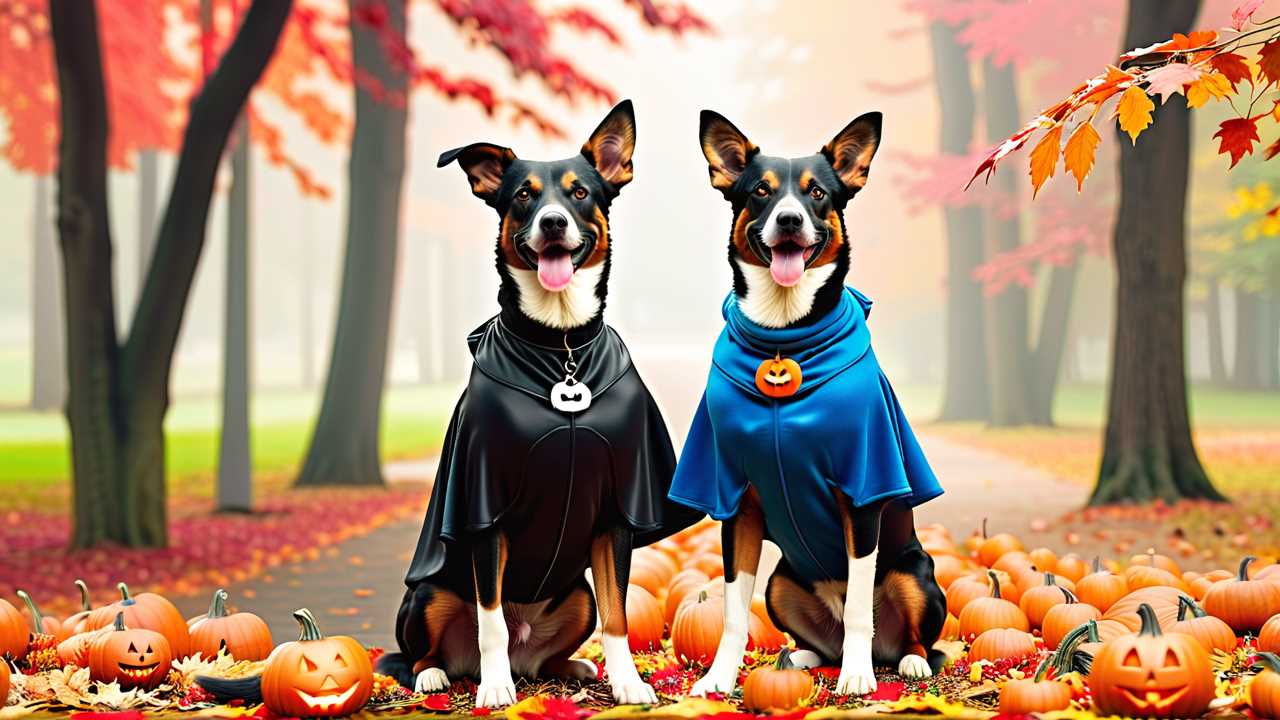
When considering if dogs should wear pet costumes for Halloween, remember to prioritize their safety and comfort above all. While costumes can add fun, make certain it doesn’t compromise their well-being. Opt for breathable fabrics and check for any potential hazards like tight straps. Watch for signs of discomfort or anxiety that may arise from wearing a costume. It’s essential to supervise them and make adjustments if needed. Keep in mind that canine comfort and safety should always come first when dressing up your beloved companion for the occasion. Further insights on keeping your pet safe and happy are available.
Pros of Dog Halloween Costumes
Dressing up your dog in a Halloween costume can add an extra element of fun and cuteness to your celebration. However, it’s important to prioritize your pet’s safety and comfort when selecting a costume.
Opt for costumes made of breathable materials that don’t restrict movement or cover their eyes, nose, or mouth. Avoid costumes with small, dangling, or easily chewed-off parts that could pose a choking hazard.
Always supervise your dog while they’re in costume, especially if they seem uncomfortable or distressed. Additionally, make sure the costume fits properly to prevent tripping or getting tangled.
Cons of Dog Halloween Costumes
When considering dog Halloween costumes, it’s important to think about your canine companion’s comfort and safety first.
Some costumes might restrict their movement or vision, causing stress or discomfort.

Additionally, certain outfits can lead to behavioral changes in dogs, affecting their mood or interactions with others.
Comfort and Safety
Ensuring your dog’s comfort and safety should be a top priority when selecting a Halloween costume for them. When considering pet costumes, keep in mind that your beloved companion’s well-being comes first. Here are some reasons why comfort and safety are essential:
- Proper Fit: Costumes should fit well without being too tight or loose, ensuring your dog can move freely.
- Breathability: Choose costumes made from breathable materials to prevent overheating.
- Avoid Choking Hazards: Steer clear of costumes with small parts that could be chewed off and swallowed.
- Visibility: Opt for costumes that don’t obstruct your dog’s vision, preventing accidents.
Behavioral Impact
Considering the potential impact on your dog’s behavior, be cautious when selecting a Halloween costume for them. Some dogs may feel anxious, stressed, or uncomfortable when wearing costumes due to unfamiliar sensations or restricted movements.
This discomfort can lead to behavioral changes like excessive panting, pacing, or trying to remove the costume. In some cases, dogs may become fearful or aggressive, especially if the costume includes masks or accessories that obstruct their vision or hearing.
It’s crucial to observe your dog’s body language and reactions carefully when trying on a costume and to prioritize their comfort and well-being. If your dog shows signs of distress or discomfort, it’s best to opt for a simpler costume or skip the dressing up altogether to ensure a stress-free Halloween experience for your canine companion.
Physical Restrictions
Be mindful of how dog Halloween costumes can physically restrict your canine companion’s movements and comfort.
- Tight costumes may limit your dog’s ability to move freely, causing discomfort.
- Costumes with constricting straps or accessories could lead to chafing or skin irritation.
- Ill-fitting costumes may pose a tripping hazard for your dog, potentially causing injuries.
- Masks or headpieces that obstruct your dog’s vision or breathing should be avoided to guarantee their safety and well-being.
Factors to Consider Before Dressing
Before dressing your pet in a costume for Halloween, make sure that it fits comfortably and doesn’t restrict their movement. Consider the fabric of the costume to ensure it won’t irritate your pet’s skin or cause discomfort.
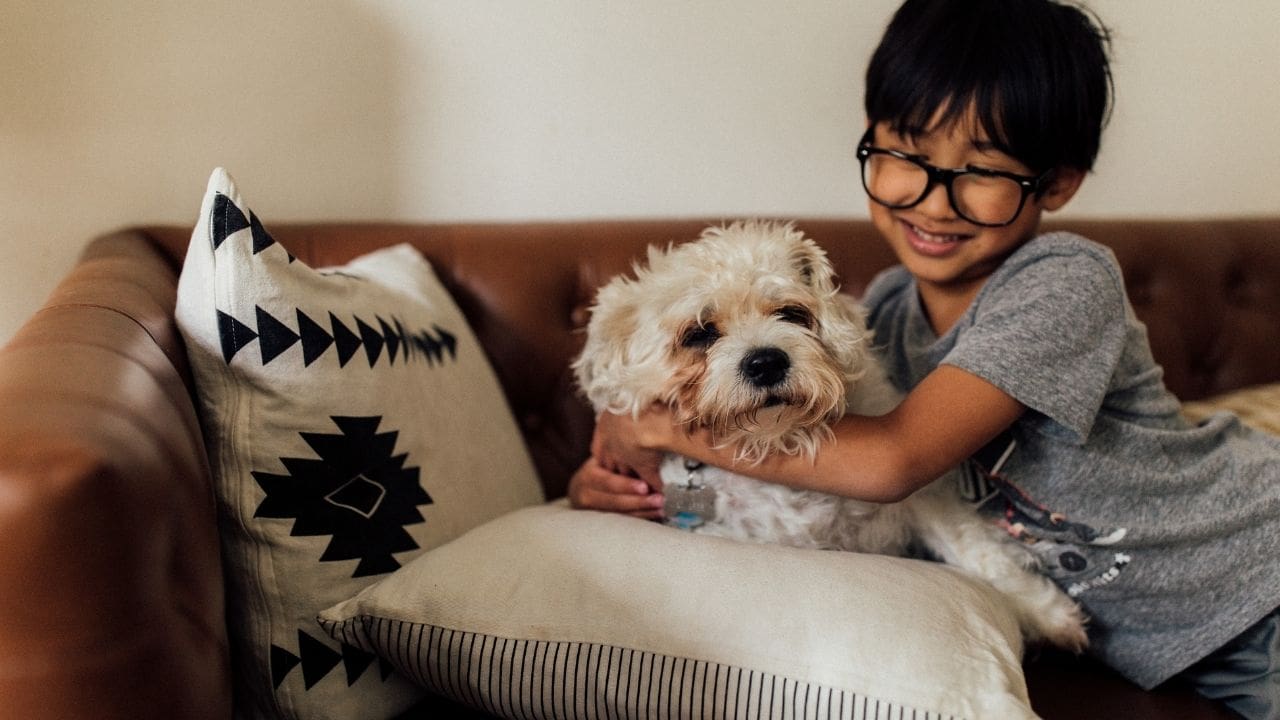
Take note of any small parts or accessories that could be chewed off and pose a choking hazard. Assess if your pet seems distressed or uncomfortable while wearing the costume, as signs of distress can include excessive panting, trying to remove the costume, or behaving unusually.
It’s important to prioritize your pet’s well-being over the desire for a cute outfit. Keep safety in mind and choose costumes that allow your beloved companion to move freely and comfortably while still looking adorable for the Halloween festivities.
Choosing Safe and Comfortable Costumes
When choosing Halloween costumes for your beloved pet, it’s important to prioritize safety and comfort. Make sure the costume doesn’t restrict movement or breathing to keep your pet at ease.
Consider opting for soft, lightweight materials to prevent irritation and make the experience enjoyable for your pet.
Costume Safety Tips
Guarantee your pet’s safety and comfort by choosing costumes made from breathable fabrics and avoiding any accessories that could be potentially harmful. When selecting a costume for your beloved companion, consider these safety tips:
- Opt for costumes without small or dangling parts that could be chewed on or swallowed.
- Make sure the costume fits properly, allowing your pet to move freely without any tightness or restrictions.
- Avoid costumes with toxic materials or loose threads that could pose a choking hazard.
- Choose costumes that don’t obstruct your pet’s vision, breathing, or ability to bark comfortably.
Comfort Considerations
Prioritize your pet’s comfort during Halloween festivities by focusing on safe and comfortable costume choices.
When selecting a costume for your beloved companion, opt for lightweight and breathable materials to prevent overheating. Avoid costumes with tight elastics or straps that could chafe or restrict your pet’s movement. Guarantee the costume allows for easy breathing, visibility, and doesn’t impede your pet’s hearing.

Remember, your pet’s comfort should be the top priority, so if they seem distressed or uncomfortable in the costume, it’s best to remove it immediately. Take time to acclimate your pet to wearing the costume before Halloween night to gauge their comfort level.
Tips for Introducing Costumes to Dogs
To help your dog get comfortable with wearing costumes, gradually introduce them in short sessions with positive reinforcement. Here are some tips to make the process smoother and more enjoyable for both you and your canine companion:
- Start by letting your dog sniff the costume to familiarize themselves with it.
- Begin by dressing your dog in the costume for short periods, gradually increasing the time as they get used to it.
- Use treats or toys as rewards to create a positive association with wearing the costume.
- Monitor your dog’s body language for signs of discomfort, such as excessive panting or trying to remove the costume.
Alternatives to Traditional Costumes
Consider incorporating accessories, such as bandanas or themed collars, as creative alternatives to traditional costumes for your pet this Halloween. These accessories can add a festive touch without causing discomfort or safety concerns for your beloved companion.
Bandanas come in various colors and patterns, allowing you to match them to the Halloween theme without overwhelming your pet. Themed collars adorned with small decorations like pumpkins or ghosts can also be a subtle yet charming way to celebrate the occasion.
Remember to choose accessories that are lightweight, non-restrictive, and free of any small parts that could pose a choking hazard. By opting for these alternatives, you can ensure your pet’s comfort and safety while still joining in on the Halloween fun.
Celebrating Halloween Responsibly
Safeguard your pet’s well-being by celebrating Halloween responsibly this year.
- Choose Pet-Friendly Costumes: Opt for costumes specifically designed for pets to guarantee they’re comfortable and safe.
- Avoid Harmful Treats: Keep candies and chocolates out of reach, as they can be toxic to animals.
- Supervise Outdoor Activities: If taking your pet trick-or-treating, make sure they’re on a leash and visible with a reflective collar or tag.
- Create a Safe Space: Provide a quiet room or crate for your pet to retreat to if they become anxious from the festivities.
Frequently Asked Questions
Can Dogs Wear Costumes if They Have Allergies?
When your pet has allergies, dressing them up in costumes can be like walking on a tightrope. Always consult with a veterinarian first to guarantee your pup’s safety and comfort.
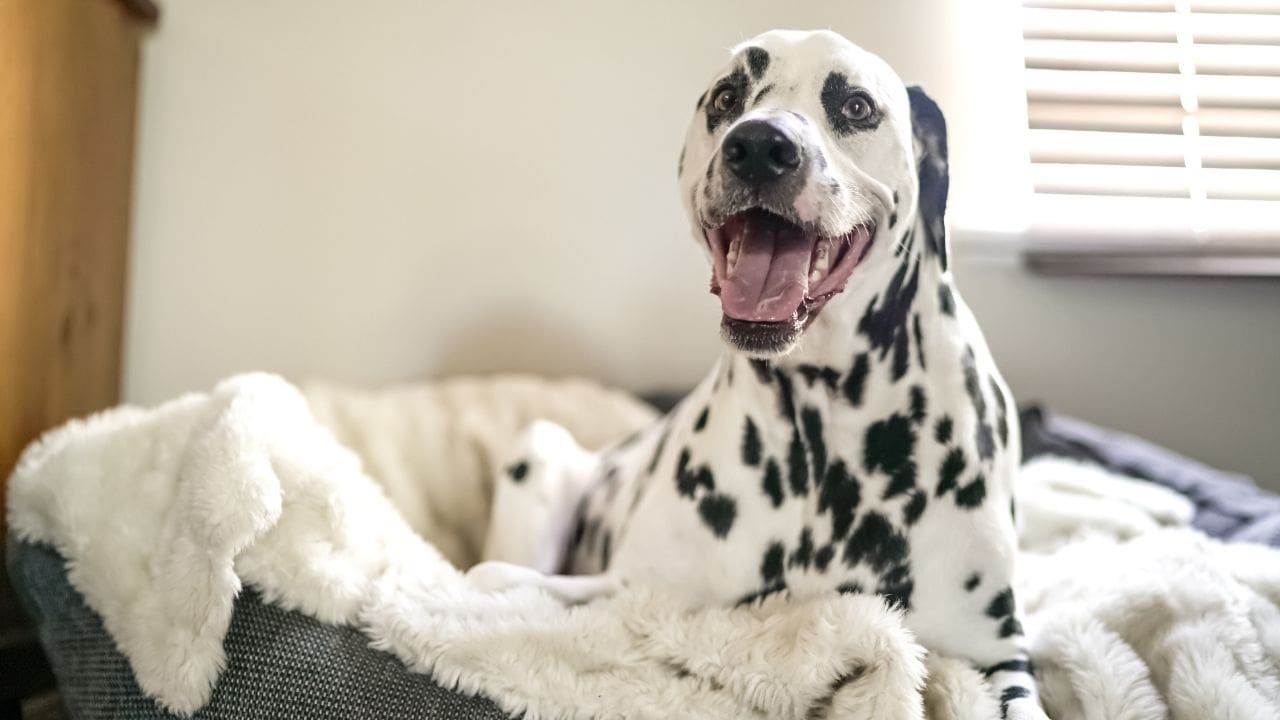
How Can I Find the Right Size Costume for My Dog?
To find the right size costume for your dog, measure their neck, chest, and length. Use a size chart provided by the costume manufacturer. Make sure the costume allows for comfortable movement and doesn’t restrict breathing or vision.
What Materials Should I Avoid in Dog Costumes?
When choosing dog costumes, steer clear of rough fabrics that could itch or irritate your beloved pet’s delicate skin. Avoid small, swallowable parts that might pose a choking hazard. Opt for comfy and safe materials instead.
Are There Any Halloween Activities Suitable for Dogs?
Make sure your beloved pet enjoys Halloween by engaging in pet-friendly activities like pumpkin carving, a costume parade, or a spooky photo shoot. Remember to prioritize their safety and comfort throughout the festivities.
Can Costumes Affect a Dog’s Behavior or Mood?
Costumes might impact your pup’s behavior and mood. Some dogs feel stressed or uncomfortable while wearing them. Always monitor for signs of distress like excessive panting or trying to remove the costume.

Hello, My Dog-Loving Friends! I’m Jason Brown, a social media marketer for Dog Training Schools and a writer at BestDogTraining.com. My world is all about the joy and wisdom our four-legged friends bring. I love the exchange of learning with dogs; it’s not just my job. It’s my way of life.
My journey began at Ohio State with a degree in journalism, fueling my passion for storytelling. This passion comes alive in every post and article I write, whether about the latest dog training techniques or heartwarming canine tales.
When I’m not immersed in the world of dogs, you can find me surfing. There’s a thrilling similarity between the unpredictability of the ocean and working with animals – both are endlessly fascinating. I’m also an aspiring poet, although I embrace the more humorous side of my attempts at verse.
Traveling is another passion of mine. My wife, kids, and I explore new places, always accompanied by our Basset Hound, Snoopy. He’s more than a pet; he’s integral to our family adventures.
Through my work, hobbies, and travels, I’ve discovered that life’s most fulfilling experiences come from sharing moments with family, friends, and a loyal dog. Follow me for stories and tips from a life enriched by dogs, the ocean, and family adventures! 🐕🌊👨👩👧👦
Dog Training
How Much Do Americans Spend on Pet Costumes?

Americans spend roughly $50 annually on pet costumes, part of the trend of celebrating with pets. Considering factors like fit, safety, and material quality is essential. Simple designs can balance aesthetics and comfort. It’s wise to set a budget and repurpose costumes to save. Different regions have varying preferences in pet costume spending, so understanding these differences can help plan accordingly. Opting for DIY costumes can be budget-friendly and add a personal touch to your pet’s outfit. The average spending reflects a shift towards including pets in special occasions.
The Rising Trend of Pet Costumes
In recent years, pet costumes have seen a significant increase in popularity among American pet owners. While dressing up your beloved pet for Halloween or other occasions can be enjoyable, it’s essential to prioritize their safety.
Make sure the costume fits properly, allowing your pet to move freely and breathe comfortably. Avoid costumes with small, detachable parts that could be swallowed. Opt for costumes made from non-toxic materials to prevent any allergic reactions.
Always supervise your pet while they’re wearing a costume to prevent accidents. Remember, your pet’s well-being comes first, so choose costumes that prioritize their comfort and safety above all else.
Show off their adorable appearance while keeping them happy and secure!
Factors Influencing Costume Spending
Factors that influence how much you spend on pet costumes include the material quality, design complexity, and brand reputation. When selecting a costume for your beloved companion, it’s vital to take into account these aspects to guarantee both style and safety.

- Material Quality: Opt for costumes made from non-toxic materials that won’t cause irritation or harm to your pet’s skin.
- Design Complexity: Simple designs with minimal embellishments reduce the risk of your pet getting tangled or uncomfortable.
- Brand Reputation: Trusted brands often prioritize pet safety in their designs, offering peace of mind when dressing up your pet.
Average Annual Expenditure Statistics
When it pertains to pet costume spending, understanding the average annual expenditure statistics can provide valuable insights.
You’ll want to take into account factors such as annual costume spending, popular costume themes, and any regional variations in spending habits.
Annual Costume Spending
On average, American pet owners spend a significant amount annually on costumes for their furry companions. It’s important to budget wisely for pet costumes to make sure you prioritize your pet’s well-being.
Here are some insights to help you manage your annual costume spending effectively:
- Set a Budget: Determine a reasonable amount to allocate for pet costumes each year to avoid overspending.
- Quality over Quantity: Invest in well-made costumes that are safe and comfortable for your pet, focusing on durability rather than buying numerous cheaper options.
- Reuse and Recycle: Consider reusing costumes from previous years or repurposing items you already have to save money and reduce waste.
Popular Costume Themes
Wondering which costume themes pet owners in America are spending the most on annually?
According to recent data, popular costume themes for pets include superheroes, princesses, dinosaurs, and pumpkins.
Superhero costumes, like capes and masks, are a top choice for many pet owners looking to add a touch of adventure to their beloved companions.
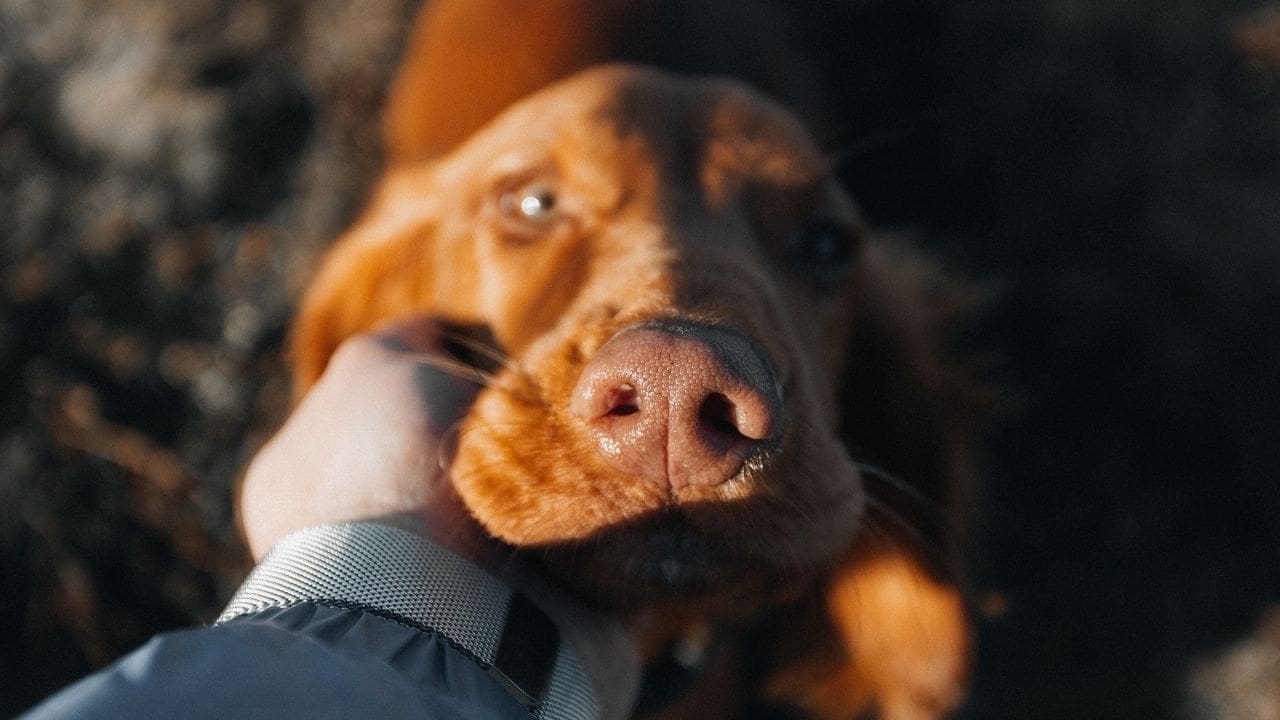
Princess costumes, complete with frilly dresses and tiaras, are also in high demand, especially for pet owners with small dog breeds.
Additionally, dinosaur costumes, featuring spikes and scales, are a hit among pet owners who enjoy playful and unique outfits for their pets.
Regional Spending Variations
Explore how pet owners in different regions of America vary in their average annual spending on pet costumes, shedding light on the diverse preferences and trends across the country.
Regarding regional spending variations, it’s intriguing to note:
- The West Coast tends to indulge more in elaborate and trendy pet costumes, reflecting the fashion-forward culture of cities like Los Angeles and San Francisco.
- Midwestern states often choose practical and durable costumes that can withstand various weather conditions, showcasing the region’s emphasis on functionality.
- Southern regions demonstrate a preference for vibrant and festive costumes, mirroring the lively and celebratory spirit commonly seen in places like New Orleans and Charleston.
Remember to take into account your pet’s comfort and safety when selecting a costume, ensuring a fun and stress-free experience for both of you.
Popular Costume Choices for Pets
When it pertains to adorning your beloved pet, popular costume choices for pets range from classic to trendy. Top pet costume trends often include superhero outfits, princess dresses, and funny food-themed costumes.
Keep in mind that the cost of pet costumes can vary depending on the complexity of the design and the quality of materials used.

Top Pet Costume Trends
Check out the top pet costume trends for this season! When dressing up your beloved companion, safety should always come first.
Here are some popular costume choices that aren’t only adorable but also safe for your pet:
- Simple and Comfortable Outfits: Opt for costumes that are lightweight and allow for easy movement. Avoid any accessories that could be a choking hazard.
- Bright Colors and Reflective Materials: Choose costumes with bright colors or reflective elements to make sure your pet remains visible, especially during evening walks or Halloween festivities.
- Avoid Masks or Constricting Items: Steer clear of costumes that involve masks or tight-fitting items that could obstruct your pet’s breathing or movement.
Cost of Pet Costumes
Guarantee the price of popular pet costumes to find the perfect attire for your beloved companion this season.
When selecting a costume for your pet, safety should be a top priority. Opt for costumes that fit comfortably and don’t obstruct your pet’s movement or breathing.
Popular costume choices for pets often include simple options like pumpkin or bumblebee outfits, which can range from $10 to $30. If you’re looking for more elaborate costumes like superhero or princess outfits, prices can go up to $50 or more.
Remember to choose costumes made from pet-friendly materials and avoid any pieces that could be a choking hazard. By considering your pet’s comfort and safety, you can make sure they look adorable and feel happy during any festive occasion.
Regional Disparities in Spending Habits
Understanding regional disparities in spending habits can provide valuable insights into how Americans prioritize their pet costume purchases. Exploring how different regions across the U.S. approach their pet costume spending can offer a glimpse into diverse cultural norms and economic factors.

Here are some key points to keep in mind:
- Urban vs. Rural: Urban areas may experience higher expenditures on pet costumes due to a higher concentration of pet boutiques and influential figures in trendy pet fashion.
- East Coast vs. West Coast: The East Coast might emphasize luxury pet costumes, while the West Coast may prefer eco-friendly and sustainable options.
- Northern States vs. Southern States: Northern states may focus on practical and warm costumes for colder weather, while southern states might opt for lighter outfits for their pets.
Understanding these regional distinctions can assist you in making well-informed decisions when planning your pet’s costume budget.
Tips for Budget-Friendly Pet Costumes
When shopping for pet costumes on a budget, consider exploring DIY options to save money and add a personal touch to your beloved companion’s outfit.
Creating your pet’s costume allows you to tailor it to their comfort and safety needs. Use pet-friendly materials like non-toxic paints, fabrics, and accessories. Make sure that the costume doesn’t restrict movement or obstruct vision to prevent accidents.
Look for inspiration online or in craft stores to spark your creativity. Simple costumes like a superhero cape or a funny hat can be both budget-friendly and adorable.
Frequently Asked Questions
Are Pet Costumes Safe for All Types of Animals?
When choosing pet costumes, guarantee they’re safe for all animals. Consider size, comfort, and materials. Avoid anything restrictive or that could be ingested. Supervise pets while in costumes to prevent accidents.
How Do Pet Costumes Affect the Behavior of Pets?
When dressing up pets, remember to prioritize their comfort and safety. Ill-fitting costumes or ones that restrict movement can lead to stress or anxiety. Choose outfits made from pet-friendly materials and supervise them closely while wearing costumes.
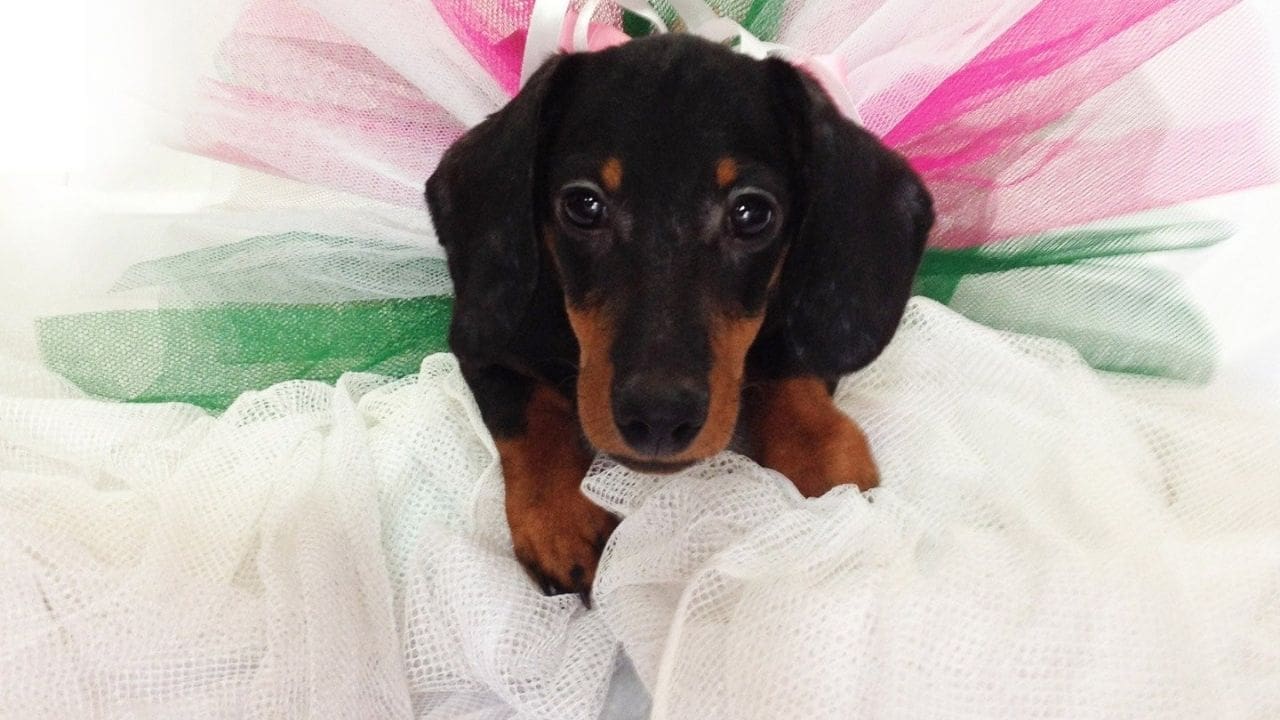
What Are the Environmental Impacts of Pet Costumes?
When considering the environmental impacts of pet costumes, it’s crucial to choose sustainable materials and practices. Reduce waste by reusing or repurposing costumes. Remember, ‘waste not, want not’ in relation to your beloved companion’s attire.
Can Homemade Pet Costumes Be Cheaper and Safer?
Making homemade pet costumes can be a cost-effective and safer option for your beloved companion. By using non-toxic materials and ensuring proper fit, you can save money and prioritize your pet’s well-being.
Are There Any Cultural Considerations When Choosing Pet Costumes?
When selecting pet costumes, prioritize cultural sensitivity. Guarantee costumes are appropriate and respectful. Steer clear of costumes that may offend or appropriate traditions. Make safety a top priority by choosing comfortable, breathable materials and avoiding choking hazards.

Hello, My Dog-Loving Friends! I’m Jason Brown, a social media marketer for Dog Training Schools and a writer at BestDogTraining.com. My world is all about the joy and wisdom our four-legged friends bring. I love the exchange of learning with dogs; it’s not just my job. It’s my way of life.
My journey began at Ohio State with a degree in journalism, fueling my passion for storytelling. This passion comes alive in every post and article I write, whether about the latest dog training techniques or heartwarming canine tales.
When I’m not immersed in the world of dogs, you can find me surfing. There’s a thrilling similarity between the unpredictability of the ocean and working with animals – both are endlessly fascinating. I’m also an aspiring poet, although I embrace the more humorous side of my attempts at verse.
Traveling is another passion of mine. My wife, kids, and I explore new places, always accompanied by our Basset Hound, Snoopy. He’s more than a pet; he’s integral to our family adventures.
Through my work, hobbies, and travels, I’ve discovered that life’s most fulfilling experiences come from sharing moments with family, friends, and a loyal dog. Follow me for stories and tips from a life enriched by dogs, the ocean, and family adventures! 🐕🌊👨👩👧👦
Dog Training
Can I Use Halloween Makeup on My Dog as Part of Its Pet Costume?
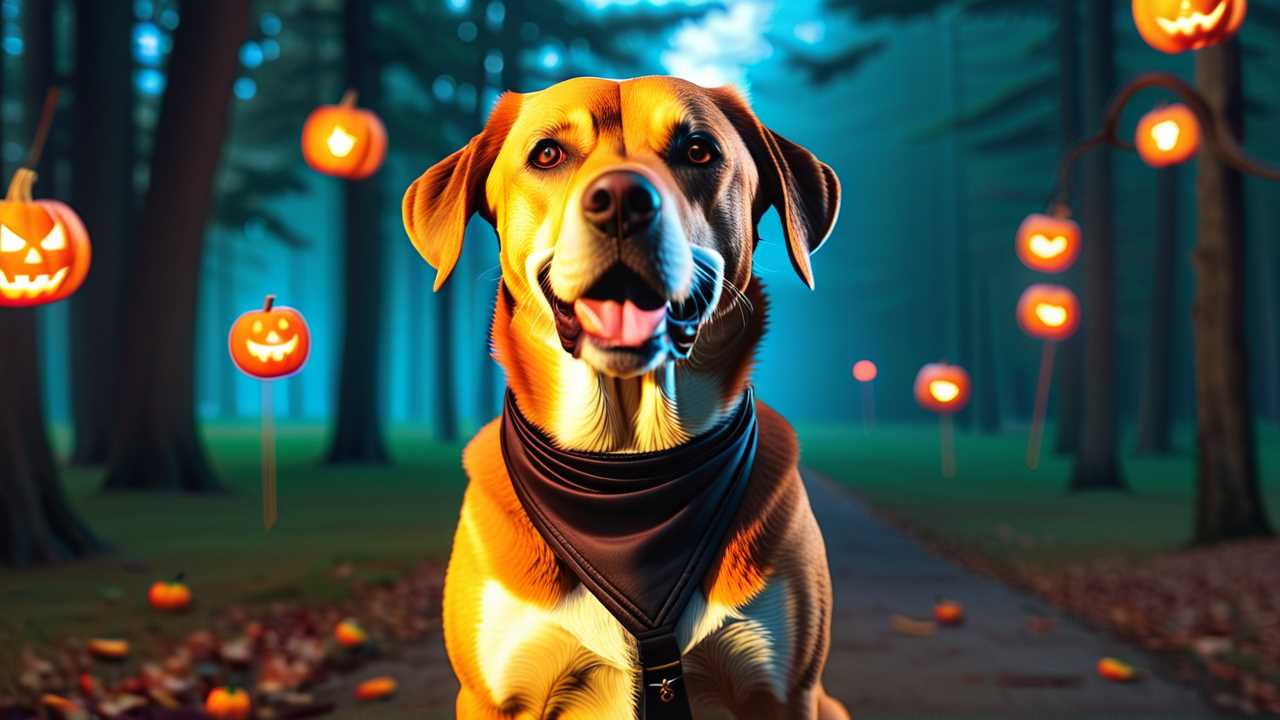
Using Halloween makeup on your dog can be a creative costume idea, but be cautious. Opt for pet-safe, non-toxic products to prevent skin irritations or risks from ingesting harmful substances. Prioritize your beloved companion’s safety by performing patch tests, monitoring their reaction, and using gentle application techniques. Remember, pets have sensitive skin; guarantee their comfort during the Halloween fun. There are alternative costume options like colorful bandanas or themed collars for a festive touch. Your pet’s well-being should always come first, so make informed choices when considering makeup as part of their costume.
Safety Concerns With Dog Makeup
Before guaranteeing any makeup to your dog, always carefully consider the safety concerns associated with dog cosmetics. Your beloved pet’s well-being should be your top priority when dressing them up for Halloween or any other occasion.
Choose makeup products specifically formulated for dogs to minimize the risk of skin irritation or allergic reactions. Look for non-toxic, pet-safe ingredients and avoid using products meant for humans, as they can contain substances harmful to dogs if ingested or absorbed through the skin.
Additionally, perform a patch test before applying makeup more broadly to ensure your dog doesn’t have a negative reaction. By taking these precautions, you can enjoy dressing up your dog while keeping them safe and happy.
Potential Skin Irritations to Avoid
Before applying Halloween makeup on your beloved pet, it’s important to take into account their skin sensitivity. Dogs, like humans, can have allergic reactions to certain ingredients in makeup.
To avoid potential skin irritations, always opt for pet-safe products and do a patch test before going all out with your pup’s Halloween look.
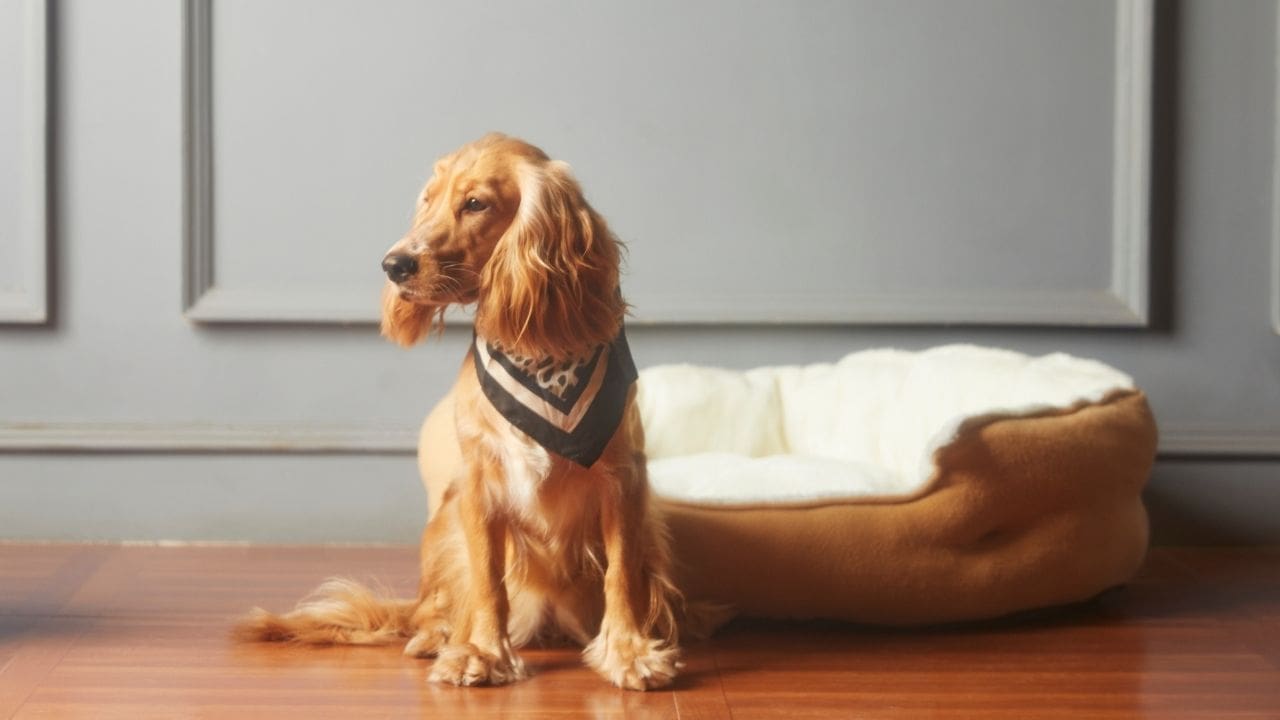
Skin Sensitivity Considerations
To guarantee your fluffy companion’s comfort, be mindful of potential skin irritations when applying Halloween makeup for dogs. Dogs have sensitive skin that can react to certain ingredients found in makeup products. Avoid using makeup that contains harsh chemicals, fragrances, or dyes that may cause irritation.
Before applying any makeup, perform a patch test on a small area of your dog’s skin to check for any adverse reactions. Additionally, make sure to thoroughly clean your dog’s skin after removing the makeup to prevent any residue from causing irritation.
Always choose pet-safe makeup products specifically designed for dogs to minimize the risk of skin sensitivity issues. Prioritizing your dog’s well-being by taking into account their skin sensitivity will help ensure a safe and enjoyable Halloween costume experience.
Allergic Reactions Risks
Select makeup products that are free from harsh chemicals, fragrances, and dyes to avoid potential allergic reactions and skin irritations in your beloved pet this Halloween.
Choose pet-safe cosmetics specifically made for dogs or hypoallergenic options to minimize risks.
Perform a patch test on a small area of your dog’s skin before applying makeup to guarantee they don’t have a negative reaction.
Monitor for any signs of discomfort such as itching, redness, or swelling after applying the makeup.
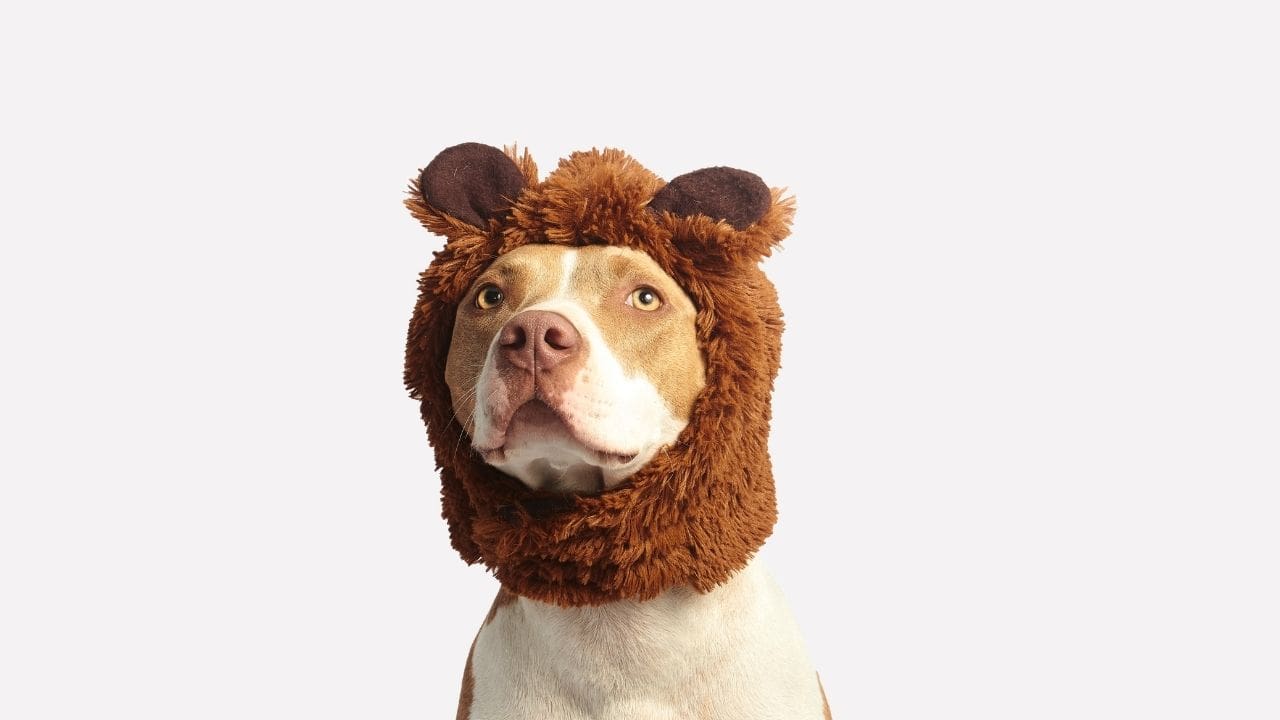
If you observe any adverse reactions, promptly remove the makeup and seek advice from your veterinarian.
Prioritize your beloved companion’s well-being by focusing on their safety and comfort when selecting Halloween makeup for them.
Toxic Ingredients in Halloween Makeup
When it pertains to Halloween makeup for dogs, it’s important to be mindful of the ingredients you’re using.
Certain chemicals can be harmful to your beloved pet, so it’s important to avoid ingredients like artificial dyes, fragrances, and preservatives.
Keep in mind that pets have sensitive skin, so opt for pet-safe and non-toxic makeup options to prevent any potential skin irritations or reactions.
Makeup and Pet Safety
Protect your pet’s safety by being aware of toxic ingredients that may be present in Halloween makeup. Some makeup products contain harmful substances like lead, formaldehyde, and various artificial dyes that could be toxic to your beloved companion. These ingredients can be absorbed through your pet’s skin or ingested when they lick their fur.
To keep your dog safe, opt for pet-safe makeup or consult with a veterinarian before applying any products. Look for non-toxic, hypoallergenic options specifically designed for pets to avoid any potential skin irritations or health issues.

Harmful Chemicals to Avoid
Prioritize Halloween makeup products free of toxic ingredients that could jeopardize your beloved pet’s health and well-being. Some common harmful chemicals to watch out for in pet makeup include lead, mercury, formaldehyde, and parabens.
These substances can irritate your dog’s skin, eyes, and respiratory system, leading to discomfort and potential health issues. When selecting makeup for your cherished companion, opt for products that are specifically labeled as pet-safe or hypoallergenic.
Reading ingredient lists carefully can help you avoid potentially dangerous components that may harm your pet. Remember, your dog’s safety is a top priority, so taking the time to choose safe makeup products will ensure a fun and worry-free Halloween celebration for both you and your loyal companion.
Pet Skin Sensitivity
Prioritize pet-safe Halloween makeup products to prevent skin sensitivity caused by toxic ingredients. Your beloved companion’s skin is delicate and can easily react to harmful chemicals found in some makeup.
Ingredients like lead, parabens, and artificial dyes can cause irritation, rashes, or even more severe reactions in pets. Opt for makeup specifically formulated for pets or those labeled as non-toxic and hypoallergenic.
Before applying any product, do a patch test on a small area of your pet’s skin to check for any adverse reactions. Remember, your pet’s well-being is the top priority, so always read the ingredient list carefully and avoid products with harsh chemicals.
Risks of Ingesting Makeup Products
Ingesting makeup products poses potential risks to your dog’s health, especially during Halloween festivities. Many makeup products contain chemicals that can be harmful if ingested, leading to stomach upset, vomiting, diarrhea, or more severe issues like toxicity.
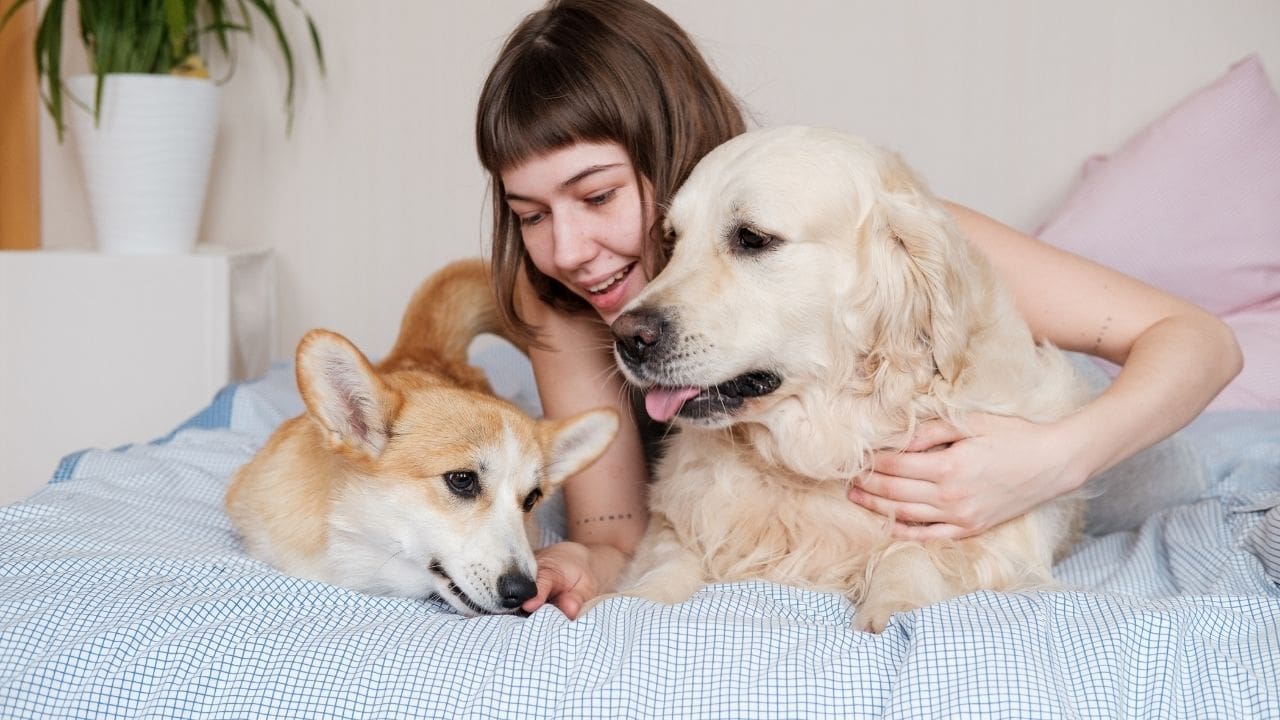
Dogs may be curious about the makeup on their skin or try to lick it off, putting them at risk of consuming these harmful substances. To keep your beloved pet safe, it’s important to prevent them from licking or ingesting any makeup applied to them.
Always opt for pet-safe makeup products or consider non-toxic alternatives like food coloring or natural dyes. Be vigilant and monitor your dog closely while they’re wearing makeup to make sure they don’t ingest any potentially harmful substances that could jeopardize their well-being.
Proper Application Techniques for Dogs
When applying makeup to your dog for Halloween, focus on using proper techniques that guarantee their comfort and safety. Start by choosing makeup products specifically designed for pets to minimize potential skin irritations.
Before applying any makeup, make sure your dog is calm and relaxed, possibly by giving them treats or gentle petting. Test a small amount of the makeup on a small patch of skin to check for any adverse reactions. Use gentle strokes and avoid getting makeup near their eyes, nose, or mouth to prevent ingestion.
If your dog shows any signs of discomfort or tries to lick the makeup, remove it immediately. Always supervise your dog while they’re wearing makeup to ensure their well-being throughout the Halloween festivities.
Tips for Choosing Pet-Safe Makeup
To choose safe makeup for your pet, be sure to check the ingredients carefully. When selecting pet-safe makeup, consider the following tips:
- Avoid Toxic Ingredients: Look for makeup that’s specifically labeled as pet-safe and free from toxic substances like zinc oxide, lead, and artificial colors.
- Opt for Water-Based Formulas: Water-based makeup is generally safer for pets as it’s easier to remove and less likely to cause irritation or allergic reactions.
- Test Patch: Before applying the makeup to your pet’s face or body, do a small patch test on a small area to make sure there are no adverse reactions or sensitivity.
Removing Makeup Safely From Dog’s Skin
When removing makeup from your dog’s skin, remember to do so gently to prevent any irritation.
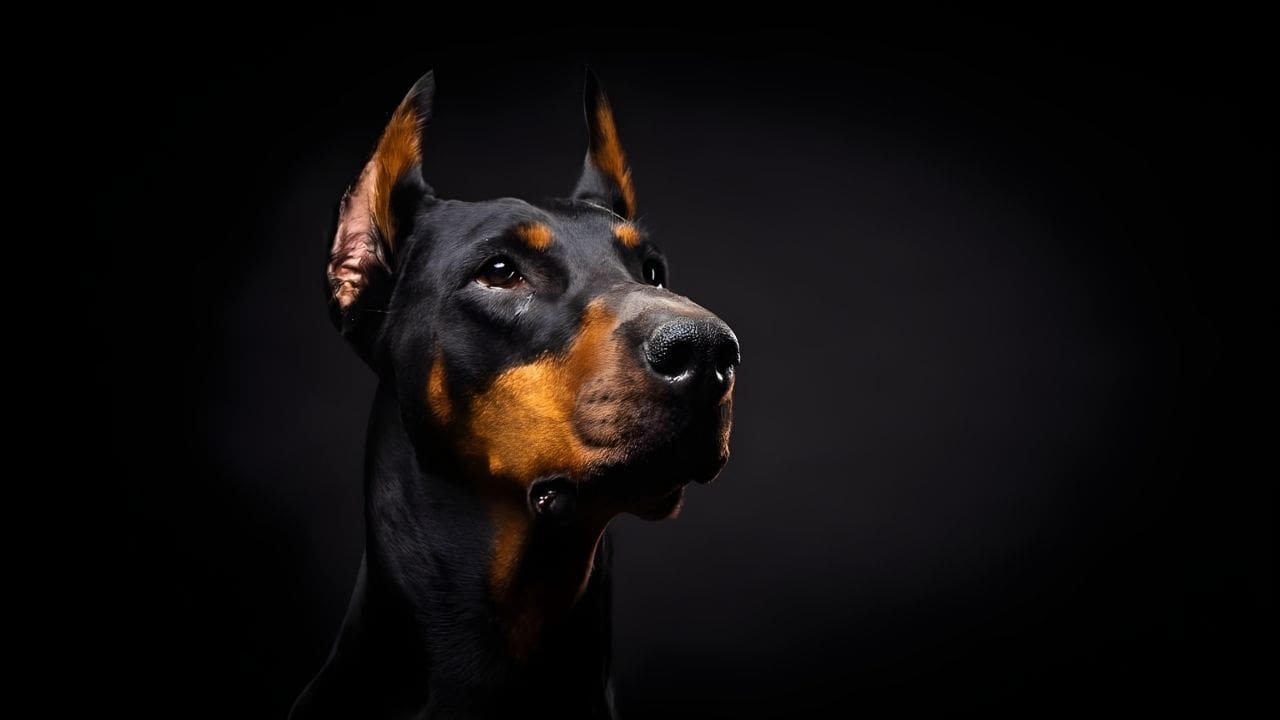
Safe makeup removal practices can help maintain your beloved pet’s skin health.
Be cautious and attentive during the process to guarantee your dog’s comfort and well-being.
Safe Makeup Removal
How can you safely remove makeup from your dog’s skin after a fun Halloween makeover? Here are three tips to guarantee a gentle and effective cleanup:
- Use Pet-Safe Products:
Opt for pet-specific makeup removers or gentle cleansers to avoid irritation or allergic reactions on your dog’s skin.
- Be Gentle:
When wiping off the makeup, use soft cloths or cotton pads soaked in lukewarm water to gently dab and lift the makeup without harsh rubbing.
- Rinse Thoroughly:
After removing the makeup, make sure to rinse your dog’s skin thoroughly with lukewarm water to make certain no residue is left behind that could potentially cause discomfort.
Prevent Skin Irritation
Keep your dog’s skin stays healthy and irritation-free by following these simple steps for safely removing makeup after a festive Halloween look. Start by using a gentle pet-safe makeup remover or unscented baby wipes. Carefully wipe away the makeup, making sure to be gentle around sensitive areas like the eyes and nose.

If the makeup is stubborn, dampen a clean cloth with warm water and dab it on the makeup before wiping it off. Avoid using harsh chemicals or scrubbing vigorously, as this can irritate your dog’s skin. After removing all the makeup, wash your dog’s face with a mild pet shampoo to make certain no residue is left behind.
Lastly, pat your dog’s skin dry with a soft towel and monitor for any signs of irritation. By following these steps, you can help your beloved pet stay comfortable and happy during the Halloween season.
Monitoring Your Dog’s Reaction
Wondering how to gauge your dog’s comfort level with their Halloween makeup? Here are a few tips to help you monitor your canine companion’s reaction:
- Observe Behavior:
Watch for any signs of distress or discomfort such as excessive scratching, pawing at the face, or trying to rub the makeup off. - Check Skin:
Regularly inspect your dog’s skin for any redness, irritation, or allergic reactions caused by the makeup. - Monitor Breathing:
Keep an eye on your dog’s breathing patterns while they wear the makeup to make sure it’s not impeding their airways or causing difficulty in breathing.
Health Risks of Using Makeup on Pets
To safeguard the well-being of your beloved pet, it’s important to be aware of the potential health risks associated with using makeup on pets. Pets have more sensitive skin than humans, making them prone to allergic reactions from makeup ingredients.
Certain substances in makeup, such as artificial dyes and fragrances, can irritate your pet’s skin, leading to redness, itching, or even more severe skin issues. Additionally, pets tend to lick themselves, ingesting the makeup and potentially causing stomach problems or poisoning.
Moreover, makeup products aren’t designed for pet use, so using them on your furry companion can clog their pores and interfere with their natural coat oils, affecting their skin health. Prioritize your pet’s safety by opting for pet-safe alternatives for their Halloween costume.
Fun and Safe Costume Alternatives
Consider incorporating pet-friendly accessories like bandanas or themed collars as fun and safe costume alternatives for your beloved companion this Halloween.

- Bandanas: Dress up your dog with a colorful bandana that complements the Halloween theme. Bandanas are comfortable for pets and are easy to put on and take off.
- Themed Collars: Choose a collar that matches the Halloween spirit, such as one with pumpkin, ghost, or bat designs. Themed collars are a simple yet effective way to add a festive touch to your pet’s look.
- Hats or Headbands: Opt for hats or headbands that are specifically designed for pets. These accessories can be a cute addition to your dog’s costume without compromising their comfort and safety.
Frequently Asked Questions
Can My Dog Wear Halloween Makeup for an Extended Period?
You should avoid leaving Halloween makeup on your dog for an extended period. It can cause skin irritation and discomfort. Regularly check for any signs of sensitivity and remove the makeup promptly to keep your canine companion safe and happy.
Is There Special Makeup for Dogs Available in the Market?
In the market, specialized makeup for dogs is available, ensuring their safety and comfort during costume play. It’s important to prioritize your beloved pet’s well-being by opting for products designed specifically for them.
How Can I Prevent My Dog From Licking off the Makeup?
To guarantee your dog from licking off makeup, distract them with toys or treats, use pet-friendly makeup, apply it sparingly, and supervise closely. Make sure the makeup is non-toxic and easily washable to keep your four-legged companion safe.
Are There Specific Breeds More Prone to Makeup Allergies?
Like a compass pointing north, some breeds are more prone to makeup allergies. Make sure you research and consult a vet before applying any products to your beloved pet. Safety first always, for a happy pup.
Can I Use Human-Grade Makeup on My Dog in a Pinch?
In a pinch, you can use human-grade makeup on your dog, but be cautious. Always test a small amount first to check for any adverse reactions. Keep an eye out for signs of irritation and remove immediately if needed.

Hello, My Dog-Loving Friends! I’m Jason Brown, a social media marketer for Dog Training Schools and a writer at BestDogTraining.com. My world is all about the joy and wisdom our four-legged friends bring. I love the exchange of learning with dogs; it’s not just my job. It’s my way of life.
My journey began at Ohio State with a degree in journalism, fueling my passion for storytelling. This passion comes alive in every post and article I write, whether about the latest dog training techniques or heartwarming canine tales.
When I’m not immersed in the world of dogs, you can find me surfing. There’s a thrilling similarity between the unpredictability of the ocean and working with animals – both are endlessly fascinating. I’m also an aspiring poet, although I embrace the more humorous side of my attempts at verse.
Traveling is another passion of mine. My wife, kids, and I explore new places, always accompanied by our Basset Hound, Snoopy. He’s more than a pet; he’s integral to our family adventures.
Through my work, hobbies, and travels, I’ve discovered that life’s most fulfilling experiences come from sharing moments with family, friends, and a loyal dog. Follow me for stories and tips from a life enriched by dogs, the ocean, and family adventures! 🐕🌊👨👩👧👦
-

 Dog Grooming2 years ago
Dog Grooming2 years ago7 Essential Tips for Dog Grooming: From Coat Length to Cooling Down Period
-

 Dog Breeds2 years ago
Dog Breeds2 years agoIs There a Real Connection Between Dog Breeds and Their Inherent Aggressiveness?
-

 Videos2 years ago
Videos2 years agoDog Training 101: How to Train ANY DOG the Basics
-

 Dog Adoption2 years ago
Dog Adoption2 years agoWhat Are the Considerations Before Adopting a Special Needs Dog?
-

 Dog Adoption2 years ago
Dog Adoption2 years agoWhy Should You Consider Bringing Home a Senior Dog?
-

 Dog Adoption2 years ago
Dog Adoption2 years agoWhat Crucial Elements Should I Consider in a Dog Adoption Contract?
-

 Dog Training2 years ago
Dog Training2 years agoUnleash Your Pooch’s Potential: Mastering the Art of Fetch
-

 Dog Grooming2 years ago
Dog Grooming2 years ago8 Essential Steps for DIY Dog Grooming At Home

